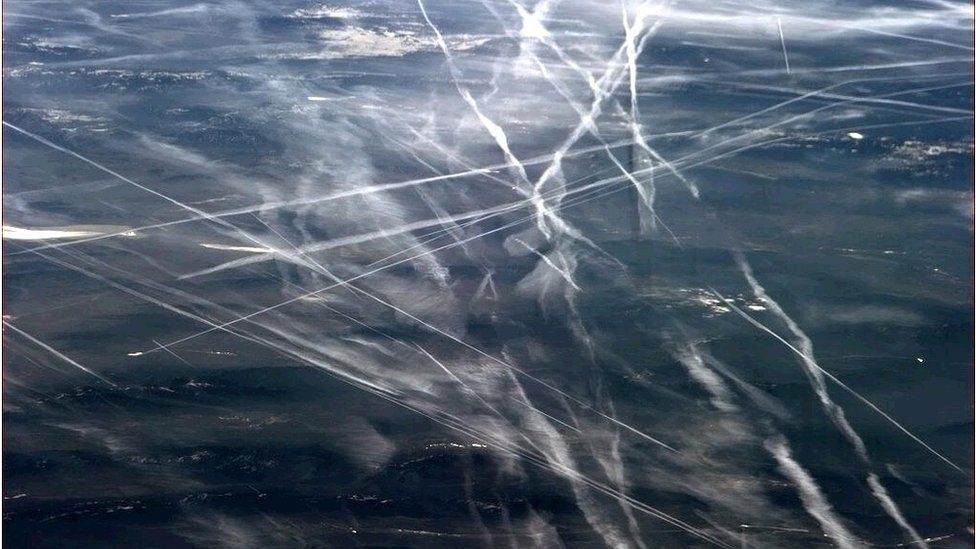Jet traffic linked to ice haze
- Published

Planes may be making a high-altitude icy haze that is brightening US skies, according to a group of scientists.
They have been looking for a reason why the total amount of solar radiation reaching the surface has been increasing over time.
Their studies suggest that part of the story is that jet exhausts could be generating a layer of ice crystals that promotes a more diffuse type of light.
This is giving clear blue skies more of a whitish tint.
The scientists have been discussing their thinking at the American Geophysical Union meeting in San Francisco.
Chuck Long, from the US National Oceanic and Atmospheric Administration (Noaa), said that if his thinking was correct then what was occurring was an example of "accidental geoengineering".
"If you look up the definition of geoengineering, it includes large-scale manipulation of parts of the climate system or the environment, and I believe this ice haze from jet traffic does satisfy that requirement," he told reporters.
Chuck Long: "It is air traffic growth that is most tightly correlated with what we see"
It has been noted that skies are brighter now than they were in the 1970s and 1980s.
The change has been attributed to environmental legislation that has removed a lot of the pollution particles that used to be emitted into the air by vehicles, industry and power generation.
These would have dimmed skies by reflecting or absorbing sunlight.
But Dr Long and colleagues argue that the observed changes are not as simple as they first appear.
Yes, the light reaching the surface has increased but not in the way expected, he said in his press conference here.
Instead of seeing a simple increase in direct shortwave radiation, a more diffuse version of this light is being detected.
This indicates something must be scattering the light as it falls on the Earth.
Plant profit
And Dr Long's analysis suggests this "something" is high-altitude ice particles, and he links their production to the water and other emissions in aircraft contrails.
"You have to have a mechanism to generate the ice crystals and there is nothing in nature up there necessarily that we can identify that would consistently produce these ice particles, except the very well correlated and well documented increase in the commercial air traffic over the continental United States," he told BBC News.
The team does not think the "sub-visual contrail-generated ice haze" has a major effect on global warming. It may, though, have some significant effects on biology, says Prof Martin Wild, from of the Swiss Federal Institute of Technology in Zurich, who commented on the work.
Plants preferred diffuse light, he explained: "If you have a canopy structure, the direct light is absorbed by the uppermost leaves. Everything below is shaded and so misses out on that energy. But diffuse light can travel deeper into the canopy and can be absorbed by the plants lower down. So in that sense, if you have more diffuse light those lower plants will profit.
And Dr Long said there were implications for solar power systems, too: "For solar renewable energy - they have two types. They have photovoltaic panels that they kind of slant to catch most of the direct sun; and then they have concentrator systems that use the actual sunlight - they track the Sun.
"If you're decreasing the direct light, then you're decreasing the energy available for those concentrator systems."
Dr Long cautioned that more analysis was needed to close his hypothesis, but said the circumstantial evidence linking planes to the ice haze looked strong.
Jonathan.Amos-INTERNET@bbc.co.uk and follow me on Twitter: @BBCAmos